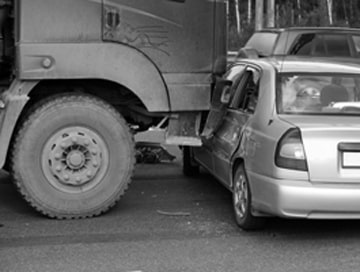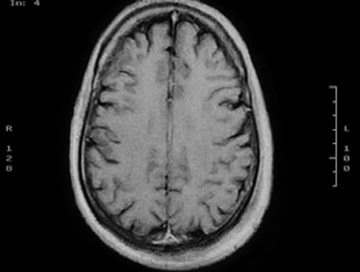
As the vibrant sun sets over the horizon, there’s an underlying risk of motorcycle accidents in California for those who dare to ride. Imagine you are riding your motorcycle through the bustling city of California, cherishing the freedom and thrill of the ride. Yet, within moments, the serene journey turns into a heart-wrenching collision, leaving you injured and overwhelmed.
In the wake of such an unfortunate incident, the need for help to navigate the legal maze and seek rightful compensation becomes paramount. Motorcycle accidents in California can shatter lives in an instant, leaving individuals grappling not only with physical injuries but also with the daunting prospect of securing their rights amidst the legal complexities. That is why it is important to speak with your local motorcycle accident attorney.
Understanding California Motorcycle Laws and Regulations
Understanding California’s motorcycle laws and regulations is crucial for riders to ensure safety and legal compliance while navigating the state’s roads.
California has specific laws tailored to motorcycles, aiming to enhance safety and reduce the risk of accidents. These regulations encompass various aspects, including licensing requirements, equipment specifications, and operational guidelines for riders.
One fundamental requirement in California is obtaining a motorcycle license or an M1 endorsement, which differs from a standard driver’s license.
To ride a motorcycle legally, individuals must pass a written knowledge test and an on-road skills test or complete an approved motorcycle safety program. This emphasis on rider education and training aims to enhance rider competence and awareness of road hazards, reducing the likelihood of accidents due to a lack of skills or knowledge.
Additionally, motorcycles in California must adhere to specific equipment regulations outlined by the California Vehicle Code (CVC). Some mandatory equipment includes mirrors, turn signals, headlights, brake lights, and a horn.
Motorcycles must also have compliant exhaust systems meeting noise emission standards set by the state. Compliance with these equipment regulations is critical to ensure visibility, communication with other road users, and adherence to environmental standards.
The practice of lane splitting
Also known as lane filtering, it is a unique aspect of California’s motorcycle regulations. It allows motorcycles to travel between lanes of slow-moving or stopped traffic. While lane splitting is legal in California, riders must perform safely and prudently.
The California Highway Patrol (CHP) provides guidelines for safe lane splitting, emphasizing a moderate and reasonable speed differential and caution in congested traffic conditions.
California law requires motorcyclists and passengers to wear Department of Transportation (DOT)-approved helmets while riding.
Helmets provide critical protection against head injuries and are mandatory for all riders and passengers, regardless of age. Helmet laws in California aim to reduce the severity of injuries sustained in motorcycle accidents, emphasizing the importance of protective gear for riders’ safety.
Comparative Fault and Its Impact on Motorcycle Accident Claims
In California, the concept of comparative fault holds substantial importance in the context of motorcycle accident cases. This legal doctrine determines how liability and compensation are assigned when multiple parties share responsibility for an accident.
California adheres to a modified comparative fault rule. Under this system, an injured party can recover compensation as long as their fault doesn’t exceed 50% or 51%, depending on the circumstances. If the injured rider’s fault is 50% or less, they can recover damages, but their percentage of fault will reduce the amount awarded. However, if their fault exceeds 50%, they are barred from recovering any compensation.
The impact on compensation
California follows a comparative fault system, allowing injured parties to seek compensation even if they are partially responsible for the accident. This doctrine considers the degree of fault assigned to each party involved in the accident when determining damages.
When both the motorcyclist and another party share fault in an accident, the court or insurance adjusters assess the percentage of fault attributed to each party. For example, if a rider is found partially at fault for not signaling, but the other driver was speeding and failed to yield, the court might assign 20% fault to the rider and 80% to the other driver.
California adheres to a modified comparative fault rule. Under this system, an injured party can recover compensation as long as their fault doesn’t exceed 50% or 51%, depending on the circumstances. If the injured rider’s fault is 50% or less, they can recover damages, but their percentage of fault will reduce the amount awarded. However, if their fault exceeds 50%, they are barred from recovering any compensation.
Effect on Settlements and Litigation
Comparative fault can significantly impact settlements and court outcomes in motorcycle accident cases. Insurance adjusters often use this principle to minimize payouts, trying to assign a higher percentage of fault to the injured party. Legal representation becomes critical to counter these tactics and ensure a fair assessment of fault.
Given the complexities involved in determining fault and the potential impact on compensation, having a skilled motorcycle accident attorney is essential. They can investigate the accident thoroughly, gather evidence, consult experts, and build a compelling case to establish the other party’s negligence while minimizing the percentage of fault attributed to the injured rider.
Understanding how comparative fault works in motorcycle accident claims is crucial. Seeking legal counsel helps protect the rights of injured riders, navigate complex legal proceedings, and advocate for fair compensation based on a thorough assessment of fault in the accident.
Statute of Limitations for Filing a Motorcycle Accident Lawsuit
In California, understanding the statute of limitations is crucial when considering legal action after a motorcycle accident. The statute of limitations sets a timeframe within which individuals must file a lawsuit to seek compensation for injuries sustained in an accident.
Generally, in California, the statute of limitations for personal injury claims, including motorcycle accidents, is two years from the accident date, per the California Code of Civil Procedure. This two-year deadline is essential for injured parties to initiate legal proceedings.
Failing to file a lawsuit within this timeframe can result in the court dismissing the case, rendering the injured party ineligible to pursue compensation for their injuries.
Motorcycle accident victims must be aware of this limitation and promptly consult with a Bakersfield motorcycle accident attorney to initiate legal proceedings within the specified time limit.
Exceptions to this general rule
Different rules may apply if an accident involves a government entity, and the timeline for filing a claim could be significantly shorter. Claims against government agencies or employees often require a notice of claim to be filed within six months or less from the date of the accident, making it essential for individuals involved in accidents involving government entities to seek legal counsel promptly.
Additionally, certain circumstances might allow for an extension or tolling of the statute of limitations. For instance, if an injury resulting from a motorcycle accident isn’t immediately apparent and is discovered later, California’s “discovery rule” might come into play.
This rule allows the statute of limitations to begin when the injury is discovered or should have been reasonably discovered. However, this exception has specific criteria and complexities that necessitate legal guidance to navigate effectively.
Knowing the statute of limitations is crucial for motorcycle accident victims seeking legal recourse. Seeking legal advice promptly after an accident can ensure compliance with the necessary timelines and increase the chances of pursuing a successful claim for compensation.
Consulting a personal injury attorney knowledgeable in California’s laws and regulations regarding motorcycle accidents can provide invaluable guidance in adhering to the applicable timelines and filing a lawsuit within the stipulated statute of limitations.

Factors That Influence Motorcycle Accident Settlements
In motorcycle accident cases, various factors significantly influence victims’ settlement amount. Understanding these factors is pivotal in determining the compensation individuals may be entitled to after an accident.
- The extent of Injuries: The severity and extent of injuries sustained in a motorcycle accident play a fundamental role in determining settlement amounts. Severe injuries, such as spinal cord injuries, traumatic brain injuries, or permanent disabilities, often result in higher settlements. Medical records, expert opinions, and ongoing medical treatment costs contribute to evaluating the impact of injuries on the victim’s life.
- Medical Expenses and Future Costs: The accumulated medical expenses resulting from the accident, including hospital bills, surgeries, therapy, medications, and anticipated future medical costs, are vital in determining the settlement amount. These expenses often serve as a baseline for compensation calculations.
- Lost Wages and Earning Capacity: The inability to work due to injuries sustained in a motorcycle accident can result in lost wages. The settlement often includes compensation for the income lost during the recovery period and potential future earnings if the victim’s ability to work is permanently affected.
- Property Damage: Reimbursement for motorcycle repair or replacement is a factor in determining the settlement amount. This also includes compensation for personal items damaged or lost during the accident.
- Fault and Negligence: California follows a comparative fault system, meaning compensation may be reduced if the victim is found partially at fault for the accident. Determining fault and proving negligence of the other party is crucial in maximizing the settlement.
- Insurance Policy Limits: The at-fault party’s insurance policy limit may cap the maximum amount of compensation available for the victim. In cases where the at-fault party has limited insurance coverage, the settlement amount may be constrained by these limits.
- Emotional Distress and Pain and Suffering: Non-economic damages, including emotional distress, pain, suffering, and loss of enjoyment of life, are also considered in settlement negotiations. These damages can significantly impact the final settlement, although they are more challenging to quantify.
- Legal Representation: Having skilled legal representation can be influential in negotiating a higher settlement. Experienced attorneys can navigate complexities, negotiate with insurance companies, gather evidence, and advocate for the victim’s rights, potentially resulting in a more favorable outcome.
Considering these factors, each motorcycle accident case is unique. Settlement amounts are determined based on the specific circumstances surrounding the accident and the damages suffered by the victim.
Seeking guidance from a knowledgeable personal injury attorney who understands the
Types of Injuries Resulting from Motorcycle Accidents in California
Motorcycle accidents often result in severe and diverse injuries due to the vulnerability of riders and passengers on the road. These injuries vary widely in their nature and severity, ranging from minor abrasions to catastrophic and life-altering conditions.
Understanding the types of injuries resulting from motorcycle accidents is crucial in comprehending the potential risks riders face and the impact on their lives.
One of the most common injuries in motorcycle accidents is road rash, caused by contact with the road surface. Road rash varies in severity, ranging from mild skin abrasions to deep wounds that may require extensive medical care.
These injuries often occur when riders are thrown from their motorcycles and skid along the pavement, leading to painful and sometimes severe skin damage.
Head injuries are among the most critical and potentially fatal consequences of motorcycle accidents. Despite the mandatory helmet laws in many states, head injuries remain a significant risk.
Severe injuries caused by motorcycle accidents in Bakersfield, CA
Traumatic brain injuries (TBIs), concussions, skull fractures, and other head traumas can occur even with helmet use. These injuries may have long-term implications, affecting cognitive abilities, motor function, and overall quality of life.
Spinal cord injuries are another devastating outcome of motorcycle accidents. The impact of a collision can cause damage to the spinal cord, leading to partial or complete paralysis, loss of sensation, and motor function impairment.
Spinal cord injuries often result in permanent disabilities, significantly impacting a person’s independence and daily life.
Fractures and orthopedic injuries are prevalent in motorcycle accidents due to the forceful impact and the lack of protection around riders’ bodies.
Broken bones, fractures, dislocations, and soft tissue injuries are common, affecting limbs, ribs, pelvis, and joints. These injuries may require surgery, extensive rehabilitation, and ongoing medical care, leading to prolonged recovery periods.
Furthermore, internal injuries, including organ damage, internal bleeding, and chest injuries, can occur due to the force of impact or contact with the motorcycle or other objects. These injuries may not be immediately apparent but can have severe consequences if left untreated.
The spectrum of injuries resulting from motorcycle accidents underscores the importance of safety precautions, defensive riding, and adherence to traffic laws. Additionally, seeking immediate medical attention after an accident is crucial, as some injuries may not manifest symptoms immediately.
Understanding the potential injuries from motorcycle accidents can help riders appreciate the risks and take necessary precautions to minimize the likelihood of severe injury.
Steps to Take Immediately After a Motorcycle Crash
Immediately following a motorcycle crash, critical steps should be taken to safeguard your well-being, gather essential evidence, and protect your legal rights. Here’s a more comprehensive breakdown of the steps to take:
- Ensure Safety: Prioritize safety first. Check yourself and others involved for injuries. If possible, move to a safe location away from oncoming traffic to prevent further accidents.
- Contact Law Enforcement: Call the police to report the accident. Cooperate with responding officers to document the scene, obtain a copy of the accident report, and gather information about their investigation.
- Gather Evidence: Take photos or videos of the accident scene, vehicles involved, damages sustained, road conditions, traffic signals or signs, and any visible injuries. Collect contact information from witnesses who saw the accident occur.
- Exchange Information: Share essential information with other parties, such as names, contact details, insurance information, and license plate numbers. However, avoid discussing fault or admitting liability.
- Avoid Discussions: Refrain from making statements, admitting fault, or apologizing, as these statements might be misconstrued and used against you later.
- Seek Medical Attention: Even if you believe your injuries are minor, seek immediate medical evaluation. Some injuries may not manifest symptoms immediately but could be severe. Keep detailed records of medical treatments, prescriptions, and related expenses.
- Preserve Documents: Keep copies of all medical records, receipts, repair estimates, and other documents related to the accident. These will serve as crucial evidence when filing a claim.
- Consult an Attorney: Contact a proficient motorcycle accident attorney with experience handling similar cases. An attorney can guide you through the legal procedures, protect your rights, and pursue fair compensation for your injuries, damages, and losses.
By following these steps, you can physically safeguard yourself, document critical evidence, and strengthen your position to resolve your motorcycle accident claim successfully.
Have inquiries? Reach out to Kuzyk Personal Injury & Car Accidents Lawyers’s motorcycle accident lawyers today for assistance!
If you’ve recently encountered a motorcycle accident in Bakersfield, California, contacting Kuzyk Personal Injury & Car Accidents Lawyers is your first step toward seeking legal recourse. Their adept attorneys have extensive experience handling personal injury cases, particularly those related to motorcycle accidents in Bakersfield, California.
By engaging their services, you can anticipate comprehensive guidance through the legal process, enabling you to navigate your situation’s intricacies efficiently and ensure your right to fair compensation.
At Kuzyk Personal Injury & Car Accidents Lawyers, their team is committed to advocating for individuals impacted by motorcycle accidents. They understand the complexities of such cases and strive to offer personalized support, empowering you to pursue compensation.
Kuzyk Personal Injury & Car Accidents Lawyers’s commitment to its clients includes thorough investigations, expert negotiations with insurance companies, and if needed, aggressive representation in court to ensure their clients’ rights are protected and they receive the compensation they deserve.
Contact Kuzyk Personal Injury & Car Accidents Lawyers today to take advantage of their expertise in handling motorcycle accident claims and safeguarding your legal rights.












